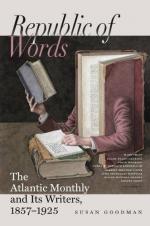[Illustration: SONG OF THE SONG-SPARROW, AND ITS VARIATIONS. Three lines of music. Line one is labelled THEME. Line 2 is labelled Var. 1 and line 3 is Var. 2.]
[Illustration: (musical notation) NOTE.—The notes marked guttural seem to me to be performed by a rapid trilling of these notes with their octave. It should be added, that no bird sings constantly in so regular time as is represented above, and the intervals between the high and low notes are very irregular. Both the time and the tune are in great measure ad libitum]
[Illustration: SONG OF THE LINNET. (Fringilla purpurea.) (musical notation)]
[Illustration: SONG OF THE WREN. (Trogledytes fulvus.) (musical notation)]
[Illustration: SONG OF THE ROBIN. (Turdus migratorius.) (musical notation)]
Another—Flexibly modulated, as if pronouncing the words below.
[Illustration: Musical staff] Tu lu lu, tu lu lu, tu lu lu, too loo.
NOTE.—The Robin is continually varying his notes; so that the two specimens, as given above, may be considered but the theme upon which he constructs his melody.
SONG OF THE WARBLING VIREO. (V. Gilvus.)
[Illustration: Musical staff] Brigadier Brigadier Brigadier Briget.
SONG OF THE RED-EYED VIREO. (V. olivaceus.)
[Illustration: Musical staff] pauses to Take a fly.
[Illustration: Musical staff] takes another, The same repeated without conclusion.
SONG OF THE GOLDEN ROBIN. (Icterus Baltimore.) [Illustration: Musical staff]
[Footnote 1: Mr. Charles S. Paine, of East Randolph, who, I believe, was the first to observe this habit of the Song-Sparrow.]
[Footnote 2: Mr. Augustus Fowler of Danversport, who has made one of the finest collections of the eggs of native birds. His drawings of the same are beautifully executed, accompanied by representations of the nests and of the foliage that surrounded them. This gentleman and his brother, Mr. S.P. Fowler, have found leisure, during the intervals of their occupation in a mechanical art, to acquire a knowledge of certain branches of natural history which would do honor to a professor.]
THE OLD WELL.
On a bright April morning many years ago, a stout, red-faced old gentleman, Geoffrey Purcill, followed by several workmen bearing shovels and pick-axes, took his way to a little knoll on which stood a wide-spreading chestnut-tree. When they reached the top of the knoll, the old man paused a moment and then struck his gold-headed cane upon the ground at some little distance from the trunk of the tree, saying, “Dig here.”
The workmen looked at each other and then at their master.
“It would be useless to dig a well here, Sir,” said one of the workmen, very respectfully,—“no water would ever come into it.”




